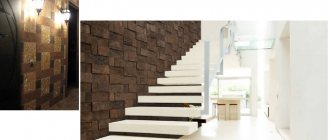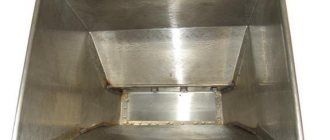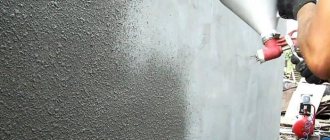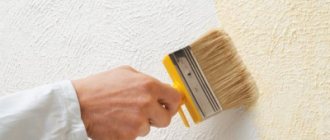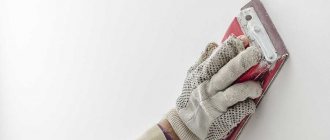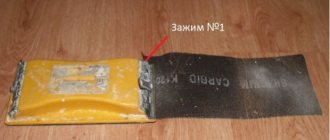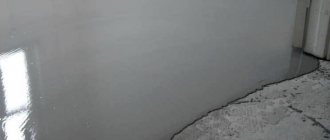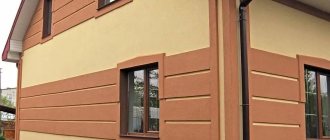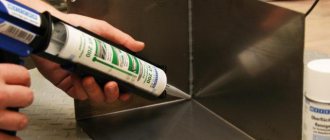Criterias of choice
Considering that modern finishing is carried out with leveling of surfaces, it is assumed that putty mixtures will be used. They are applied using spatulas. The tools are produced in different sizes and configurations. To facilitate repair and construction work, it is selected taking into account the following criteria.
Which SPATULA do I choose? Rating of MY spatulas. Pros and cons of each of them!
Manufacturer
The final result of finishing work is influenced in particular by the quality of the tool. In order for the mixture to lie smoothly on the surface without rolling, you should choose spatulas made by well-known brands. Products from the following manufacturers are trustworthy:
- Sibrtech;
- RemoColor;
- Vortex;
- Kraftool;
- Gigant;
- Matrix;
- SPARTA;
- Bison
What types of spatulas are there?
The tool for applying mortars is available in different parameters, which is determined by its purpose. The following types of spatulas are distinguished.
Painter . This type is used for finishing premises. Externally, the products resemble a wide spatula. Thanks to this grip, it is possible to apply a large portion of the mixture in one go.
Facade . This is a metal tool with a trapezoidal working part. They are convenient for applying and leveling mixtures over large areas. The blade width range reaches a maximum value of 1500 mm.
Serrated . To distribute the adhesive mixtures, use a tool with teeth along the edge of the blade. The assortment includes spatulas with different blade and tooth sizes. When working with gypsum composition, it is recommended to use large teeth, and with tile adhesive - small ones.
For a liquid consistency, choose fine-toothed spatulas with triangular notches. This tool is suitable for use only on a flat surface. The width of the blade varies from 200 to 300 mm.
Rubber . The products are used for applying putty to small areas of the surface or grouting joints. The tool is also used when distributing sealant or putty around tile joints. The width of the blade is 40-80 mm.
An alternative to a rubber spatula is a silicone scraper.
Corner . This is a type of paint spatula. The scope of application is limited to areas with corners. The outer edges of the working part are protected by plastic or aluminum plugs. The main condition for using the product is the presence of an angle of strictly 90 degrees.
Spatula-scraper . The purpose is to remove old finishes or excess pre-applied material from the working surface. The blade of such a tool should not bend. Therefore, the blade has high rigidity. The width of the blade is available in the range of 50-70 mm.
Curly . Their task is to create a certain texture on the surface. This can be an imitation of wood, stone, etc. Different plastic compositions are used to make shaped spatulas.
Purpose
On the label of each spatula, the manufacturer indicates its area of application. The tool is produced for application:
- plasters;
- putties;
- grout.
This parameter determines what material is used in production, the flexibility of the blade, its shape, and the configuration of the handle. This is due to the consistency of the solution used and the technology of its application.
Working width, mm
This parameter determines the area captured in one pass by the tool. Products are produced with a working part width ranging from 6 to 1500 mm.
| Blade width, mm | Features of application |
| up to 100 | Suitable for puttying hard-to-reach places. Main area of application: arches, niches, slopes. |
| up to 250 | Recommended for small defects, cracks, or partitions. Subsequent processing requires surface grinding. |
| up to 600 | Used for leveling large areas. It is used more often with the rule when distributing the starting mixture. The tool eliminates large irregularities. |
Length, mm
The proportions of the length and width of the tool blade must be comparable. Otherwise, a spatula with a high working part will bend during the application of the solution, which will reduce the quality of the finish. The ideal ratio of handle clamp size to blade width is 1:2.
Tool length range: from 30 to 620 mm.
What material is the working part made of?
The following materials are used to make spatula blades:
- stainless steel - products can be used for any task;
- plastic – suitable for smoothing wallpaper, distributing adhesive solution, putty when covering a small area;
- rubber - used primarily for grouting or working with plaster.
The tool handle is made:
- rubber;
- plastic.
This parameter does not affect the functionality of the tool. But it matters for the convenience of puttying. The handle should fit comfortably in the master’s hand to avoid rapid fatigue and pain.
An alternative option for spatulas is a cast stainless steel design. In this case, the handle can be covered with a thin layer of rubber or remain metal.
Is there an anti-slip handle
Whatever the ergonomics of the handle, the sliding effect contributes to rapid hand fatigue and causes discomfort in work. Therefore, for processing large areas, it is recommended to choose a tool whose handle has an anti-slip coating. It can be plastic with rubber, silicone and other materials.
Various types of spatulas
This tool is used in completely different construction activities; it has a very diverse shape, size, and purpose. The plate that is used to apply the solution can be made of many materials. There are spatulas that are used exclusively in highly specialized finishing work. When talking about wall putty, we most often mean a product that has a metal blade (plate) equipped with a handle (made of wood or polymers).
Tools for facade work
Spatulas can be used not only for work inside buildings. They are also successfully used outside the house. The blade of such tools is very wide. It is made exclusively from durable steel, which does not allow it to bend freely. This product is used for applying the solution to large areas of the surface. In shape, it is a trapezoid with a size of thirty to sixty centimeters.
This tool is very convenient to use if you combine it with a smaller brother. For greater convenience, working with such a product should be carried out according to the following principle: using a paint spatula for putty (its size is much smaller), the mixture is scooped up and applied along the entire length of the blade of a larger spatula, and then applied to the wall. This is during the preparatory phase. The finishing is done a little differently. The previous sequence is maintained, but now the instruments are swapped.
Spatula for facade work
Painting spatulas
This product has proven itself well in finishing work. The spatula allows you to perform the following tasks:
- after applying the putty, it smoothes out any unevenness;
- covers the seams that form between sheets of drywall;
- it is convenient for them to seal any cracks and crevices;
- used for puttying structures that have a complex structure.
In its shape, it is very similar to a façade trowel, but has some differences:
- Size. Unlike a tool for working on large surfaces, it is designed for miniature operations. Therefore, its size is no more than ten to fifteen centimeters. Although spatulas with a width of 2 to 8 cm are most often used.
- Plate thickness. The plate used is much thinner than others.
- It has greater elasticity and flexibility.
- The blade of such a device is made of stainless steel.
A painting spatula differs from a facade spatula in the width and thickness of the blade.
It is customary to distinguish two groups of such tools:
- For professional use.
- For the purpose of household work (there are “disposable” varieties).
The tool for professionals has a very thin plate (about one millimeter). Its fabric bends well, but at the same time is very elastic. The product, which belongs to the category of “disposable”, is very easy to distinguish - it has a plastic handle, the metal used is second-rate. When pressed, even very lightly, the canvas bends strongly. It is very difficult to work with them; it is almost impossible to obtain an ideal surface. It is good for filling small cracks.
Everyone who is involved in construction professionally has their own opinion on the issue of selecting the size of façade and painting spatulas for putty. They are guided by experience that has been developed over the years. I most often use this size of tools:
- a product for basic work, their width ranges from twenty to twenty-five centimeters;
- for auxiliary work, the width is much smaller, up to ten centimeters.
Angle spatulas
It is very difficult to straighten corners. This is what contributed to the development of special spatulas for putty, which are convenient for making internal corners. They consist of two surfaces located at right angles to each other. The demand for such products is low. The fact is that it is very difficult to use them; professional skills are needed. Therefore, even masters do not always use it in their work, preferring a tool with a flat blade.
Spatula for leveling corners
Rubber spatula
It is used for subsequent grouting. It is not used in work with putty, due to the fact that it is completely made of rubberized material. Accordingly, it has increased flexibility and cannot apply putty as required when finishing walls. Convenient when working with fragile surfaces (tiles, laminate).
The size and shape of such products may vary. They may look like simple spatulas.
Rubber spatula
Spatula acting as a scraper
This tool was created specifically to remove excess putty. Its blade does not bend at all; it is made of high-strength metal. It has a small working surface, it does not exceed eight centimeters.
There are other types of tools, but they are not designed for applying putty or plaster. These are notched spatulas - they should be used to apply adhesive to the tiles, and with a pointed blade (on one side) - to remove paint.
Notched trowel
How to use a spatula correctly when putting putty
Everyone can master the technique of applying putty. But it's worth putting in some effort to develop the skills. First, it’s worth understanding the purpose of the putty mixture. The product is designed to level the surface that is planned to be painted or wallpapered.
Depending on the depth and nature of the depressions and crevices, the type of putty is selected: starting or finishing. In the absence of large defects, it is advisable to use a finish. Start is suitable for filling deep holes, leveling the plane with differences exceeding 0.5 mm.
For puttying, choose a spatula with a working part of 500-600 mm. This tool is convenient for distributing the solution over a large area. A 100-150 mm spatula is used as an auxiliary device for applying the mixture onto a wide spatula.
How to work with a spatula - the rule?
Puttying technology is conventionally divided into two stages:
- distribution of the mixture over the base;
- leveling the applied layer with a tool spatula.
Schematically, the puttying process looks like this:
- Using a narrow spatula, apply the mixture to the working part of a wide tool;
- Using the main spatula, spread the putty over the surface.
Some craftsmen use a different technique, applying the solution directly to the wall with a narrow spatula. Next, use a wide spatula to level the layer.
Features of puttying
Most often, two layers of putty are required to level surfaces. The first ball covers the main irregularities, so its thickness can reach 1 cm. When the mixture is distributed onto the handle, the impact is such that the edges of the blade bend. The middle remains practically motionless.
First, the spatula is held almost parallel to the plane of the wall. In this position, unevenness may form along the edges of the blade due to an excessive amount of solution. Sagging should be removed with a narrow spatula. Most often, craftsmen apply the collected putty to the central part of the wide blade.
After forming the layer, it is necessary to walk over the surface with a wide spatula to smooth the surface and eliminate minor defects.
To create the first ball in the presence of large irregularities, use starting putty. The second layer is applied to the finish. This is a more flexible composition that forms a thin ball, giving smoothness. Its thickness should not exceed 2 mm. For work, the same spatulas are used as in the previous stage.
The tool should be held in your hand, holding the blade relative to the base at an angle of 20 degrees. Movements are performed in the direction from top to bottom, from left to right. The mixture is distributed in strips, each time covering a larger area. When working with a spatula, it is necessary to enter the treated areas in order to create a monolithic layer.
Before applying each layer of putty mixture, you need to treat the surface with a primer to increase adhesion. In this case, it is allowed to continue work only after the wall has completely dried.
How many spatulas to prepare for work
A large number of spatulas are produced, differing in size and type of material. For puttying you will need at least two tools. One of them should have a narrow working part, the other – a wide one. Beginners should not choose products with a blade that is too wide (more than 500 mm). Without skill you won't be able to cope with the leveling.
Selecting a tool by size
At different stages of wall finishing, completely different products are needed, differing in shape and size:
| Size range | Application |
| Up to sixty centimeters | Used in conjunction with a rule. They allow you to eliminate any surface irregularities, as well as seal cracks and cracks. Used for basic (starting) work. At this stage, the mixture is applied in a thick layer. Additionally, deep damage is repaired. |
| Up to twenty-five centimeters (average) | Find their application after a wide tool. They make it possible to give the walls a smooth finish. The main task is to seal small holes. After this, protrusions may remain; grinding is necessary to remove them. |
| Up to ten centimeters (narrow) | Used after the middle fixture. It often happens that larger tools are not convenient to work in hard-to-reach places. Then narrow spatulas are used. After using them, almost any defect is eliminated. Naturally, it is difficult to work with them on a large surface. It is also a supporting tool. It makes it possible to collect the mixture in the required quantity. |
How to get rid of putty build-up
When applying an excess amount of mixture to a wide spatula, sagging forms along the edges of the tool. To prevent them, it is recommended to gradually reduce the angle of inclination of the tool blade to the surface being processed. Approximate parameters at the beginning of work are an angle of 50-60 degrees, at the final stage - an angle of 20-30 degrees.
Sagging can also appear if the spatula is held incorrectly. Experts recommend sticking to this arrangement of the tool:
- the handle is placed in the palm;
- The index finger is placed on top of the working part (it provides additional pressure);
- with the other hand, press the corners of the shoulder blade (this helps to achieve a leveling effect the first time).
To remove the excess layer, the spatula must be held at an angle of 90 degrees.
Other reasons for swelling include:
- violation of the putty storage regime;
- the mixture has aged;
- low-quality products (counterfeit).
Some craftsmen are trying to revive a poor-quality mixture to increase its plasticity. To do this, add one of the ingredients to the solution: dishwashing detergent, PVA glue, plasticizers. This process requires a preliminary study of the issue to determine the proportions and suitable components for a certain composition of the putty.
How and with what to clean a spatula from dried putty
Putty forms a strong crust on the spatula if the tool is not thoroughly washed after each use. Getting rid of dried deposits is not easy, and working with such an assistant is not at all possible.
It also happens that by the end of the work the solution has already firmly stuck to the working part, then it will not be possible to cope with it with water alone. To loosen the clog, it is recommended to use the following cleaning methods.
- Pour warm water (0.5-1 l) into a small container. Dissolve a tablespoon of citric acid in it. After thorough mixing, lower the spatula into the acidic solution and let it stand for 5-10 minutes. The reaction occurs almost instantly: bubbles form on the contaminated surface, and the layer begins to move away from the instrument in flakes. All that remains is to rinse the product under running water and dry it.
- Some types of putty (including automotive putty) undergo cracking when heated. You need to point the turned-on hair dryer at the contaminated surface and wait for the layering to deform under the influence of high temperature. Cleaning is completed by rinsing in clean water and drying.
- Soaking in an acidic environment will help get rid of dried mortar on a spatula. To prepare the solution, dilute 100-130 ml of vinegar in 1 liter of water. Allow the tool to stand in the liquid for 10 minutes, after which they help remove the softened putty with a utility knife. It is important to rinse the metal scraper thoroughly after exposure to acid so as not to provoke the formation of rust.
When choosing a method, it is important to take into account that an acidic environment is applicable for spatulas with a metal working part. Rubber instruments will deteriorate in such a solution.

